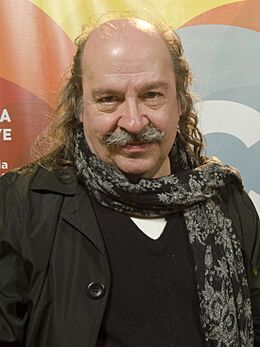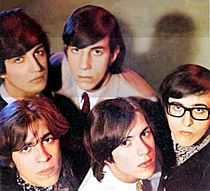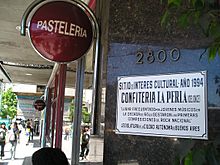Litto Nebbia facts for kids
Quick facts for kids
Litto Nebbia
|
|
|---|---|

Nebbia in 2014
|
|
| Background information | |
| Birth name | Félix Francisco Nebbia Corbacho |
| Born | 21 July 1948 Rosario, Santa Fe, Argentina |
| Genres | Rock, folk, tango, jazz rock, progressive rock, soundtracks |
| Instruments | Vocals, guitar, piano, harmonica, keyboards |
| Years active | 1960s–Present |
| Associated acts | Los Gatos |
Félix Francisco Nebbia Corbacho, known by his stage name Litto Nebbia, is a famous singer, songwriter, and musician from Argentina. Born on July 21, 1948, he is a key figure in the history of Argentine rock music.
Contents
The Start of a Music Legend
Early Life and First Band
Litto Nebbia was born in Rosario, Santa Fe, to parents who were also musicians. As a teenager, he decided to leave high school to follow his passion for music. He and his friend, keyboard player Ciro Fogliatta, started a band called "The Wild Cats."
In 1963, the two friends moved to Buenos Aires. Life was not easy, and they didn't have much money. They appeared on a TV show called Escala Musical and often played at a popular club named La Cueva, which became a famous spot for the growing rock music scene in Argentina.
The Birth of Los Gatos
In 1966, Nebbia and Fogliatta formed a new band called "Los Gatos" (The Cats). The group became famous for playing music all night long. They wrote most of their own songs at a local café called "La Perla del Once."
One of their most famous songs, La balsa (The Raft), was written there by Nebbia and another songwriter, Tanguito, on May 2, 1967. When the song was released on July 3, it was a huge hit, selling over 250,000 copies. This was a major moment for Argentine music.
A Groundbreaking Hit
Why "La balsa" Was So Important
The album featuring "La balsa" was the first rock album from Argentina to sell more copies than popular American or British bands. This event is often called the birth of Argentine rock. In 2007, the Argentine version of Rolling Stone Magazine named "La balsa" the number one song in the history of Argentine rock.
The success of the song helped the band greatly. Before the hit, they were struggling so much that they had to watch their own performance on a TV in an appliance store window because they didn't have a television.
Challenges and Changes
The song "La balsa" also caused some problems. The strict government at the time, led by General Juan Carlos Onganía, was not happy with the song's message. They closed down the club La Cueva, where many rock bands, including Los Gatos, performed.
Soon after, the band started to break apart. Guitarist Kay Galiffi moved to Brazil, and Nebbia left the group in 1969. By 1970, Los Gatos had officially ended.
A Successful Solo Career
After leaving Los Gatos, Nebbia started his career as a solo artist. He mixed different styles of music, including traditional Argentine folk music and jazz. In 1975, he also began working as a record producer, helping other artists create their albums.
In 1976, a new government came to power in Argentina. Nebbia felt unsafe, so he had to leave the country and moved to Mexico. Even while living away from home, he continued to make music and released some of his most popular albums.
He returned to Argentina in 1982. A year later, he performed in a huge concert called the Rosariazo with other famous musicians.
Creating a Space for Music
In 1988, Nebbia turned a part of his mother's home into a recording studio. He named it El Nuevo Mundo ("The New World"). This led him to start his own record label, Melopea Records, in 1989.
Melopea Records became known for finding new musical talent. It also produced and released old tango songs that had never been heard before, including works by famous tango musicians.
In 2007, the members of Los Gatos reunited for a special performance. Many famous Argentine rock stars, like Charly García and Luis Alberto Spinetta, have said that Litto Nebbia and Los Gatos were a major inspiration for them.
Selected Albums
Litto Nebbia has recorded over 100 albums. Here are some of his most important ones:
- Litto Nebbia (1969)
- La balsa (with Los Gatos, 1967)
- Melopea (1974)
- Canciones para Cada Uno, Vol. 1 (1978)
- Solo Se Trata de Vivir (1982)
- Demasiadas Maneras de No Saber Nada (1986)
- Nebbia Canta Cadícamo (1995)
- Rodar (50 Años de Rock Argentino) (2017)
See also
 In Spanish: Litto Nebbia para niños
In Spanish: Litto Nebbia para niños



